Well, while that might well be, this particular case has more to do with wanting to enjoy the flowering period of one of my favourite plants for as long as possible, unspoiled by the ugly sight of wilted blooms. Campanulas – or bellflowers - do not wilt well, aesthetically speaking. A reason why it might not be a good idea to have too many of them in a small plot. But, as I said, campanulas are amongst my absolute favourites and I would not want to be without them. So in order to keep things looking good I cut most faded flowers off immediately. One by one. Obviously, I have more spare time than is good for me. Yet one of the few advantages of gardening in a tight space is having a limited number of plants so you can tend to them individually: I have, after all, only two bowls full of the above mentioned C. cochleariifolias.
I know. Why plant them if you don’t even have a good spot and space for them? There’s no rational explanation I’m afraid. It is greediness that made me buy all these campanulas in the first place because I adore them and wanted their company. And now I try to keep them alive, promising them that one distant day – if they hold out for that long – I’ll set them free in a proper border. Poor things, I really hope they keep faith in me!
So here comes my campanula list:
I have a very sentimental attachment to Fairies’ Thimbles: my grandfather used to grow them as edging along both sides of the main path in his garden. As a child I was fascinated (and still am) by their perfect miniature bell shape and graceful daintiness. However, I quickly, if disappointedly, learned that you can’t really preserve them by pressing. For one thing, the shape isn’t half as pretty in 2 D (two dimensions). Far worse though: they don’t keep their colour! Rather than a lovely blue or white, you’ll be left with a transparent, slightly brownish or bluish shadow of the flower. That, by the way, seems to be the case with many if not most campanulas. Best to enjoy them alive, then.
Then I have a pot with Campanula barbata. It is tempting to link the Latin “barbata” to the German word “Bart” – beard – and I am sure the connection is there since this campanula, flowers and all, is hairy. It is fascinating to observe a bumblebee crawling into a bloom, barely bigger than the insect itself, and then for it to re-emerge and wipe its big equally hairy bum while sitting on such an unsteady, perilously bending seat.
Walking around in the neighbourhood, I often come across another campanula – especially in slightly neglected front gardens. It is Campanula poscharskyana and much as I try, I fear I’ll never remember its name by heart. Notwithstanding this, it is a creeper with flat star-like flowers that clings to walls and romps in crevices. I’m sure it can get out of hand fairly easily as it is decidedly rampant, has such long shoots and puts down roots wherever these shoots find a tiny suitable crack to hang on to.
As I do not have a wall with cracks in and am too nervous to let it loose elsewhere in the garden, I keep one plant in a shallow pot – albeit not the usual purple-blue one but a variety called “E.H.Frost” with milky-white flowers. Also, its leaves seem paler than those in my neighbours’ gardens – but that may have to do with depletion of nutrients in the pot rather than it being a “natural” feature. I feel pretty guilty about it, it reminds me of cheetahs or eagles kept in zoo enclosures: poor creatures with no room to run or soar as they were meant to by Mother Nature
In a similar vein, there is Campanula portenschlagiana, only marginally easier to remember but prettier in my eyes: I like my bellflowers to be bell-shaped. (Although, to be precise, these are more funnel- than bell-shaped). It used to be called C. muralis because this plant, too, grows and looks great in wall crevices etc. – like a mural perhaps. Lewis and Lynch describe it as “one of the menaces among campanulas” because it has not just “long questing stems reaching out to cover the ground” but “more reaching out below the surface of the soil in quest of fresh territory”. But they immediately qualify their harsh verdict by adding “although the runners do quest far, in a more open situation they are not at all hard to control by just pulling them out; only in a neglected situation will they spread menacingly”. Somewhere I have read it described as “the most charming weed in the world”.
I have mine in a container, shading the foot of Clematis tex. ‘Princess Diana’ and very decoratively hanging over its rim. Each year there are masses of deep lavender blooms. So many in fact that you can hardly spot any leaves. When spent, you simply pull off the flowering stems that grow from the rosettes and it looks all tidy again. Usually you get more blooms a little later.
I’ll write about more campanulas next week.
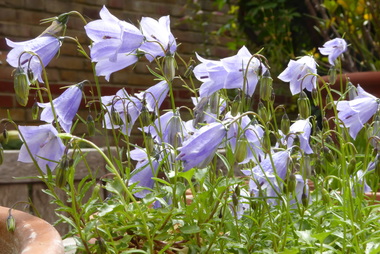
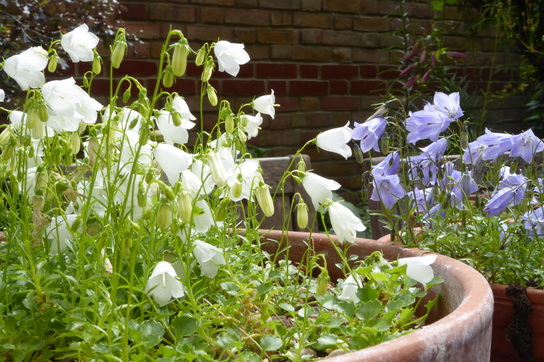
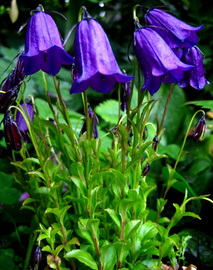
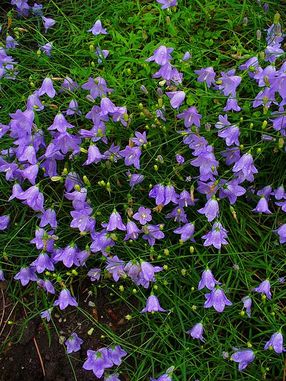
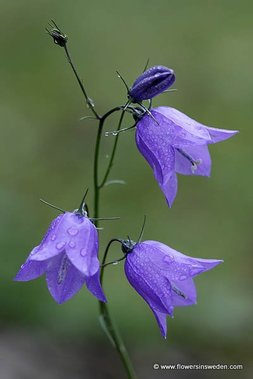
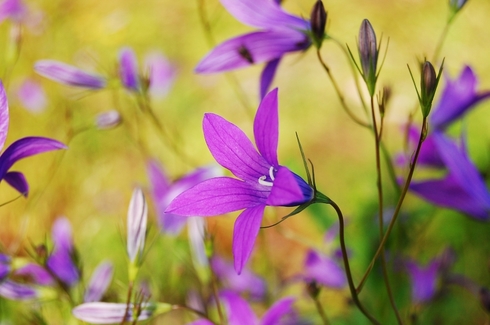
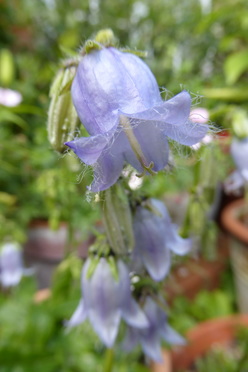
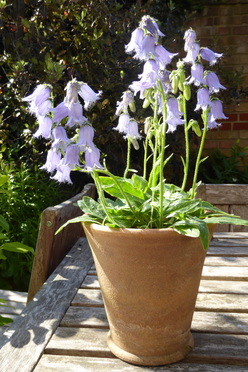
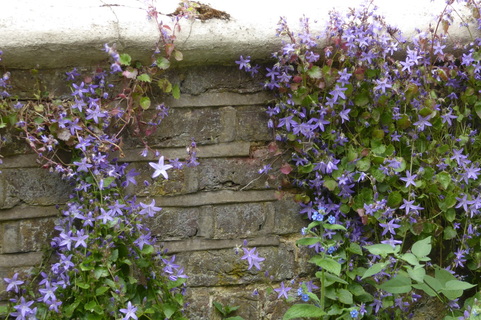
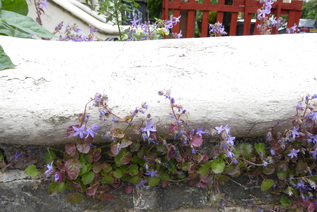
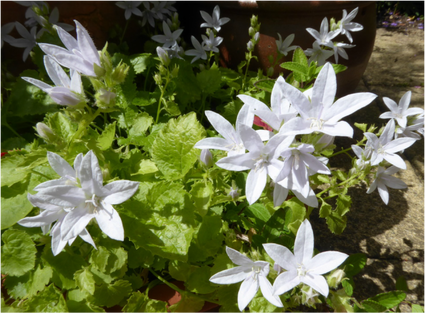
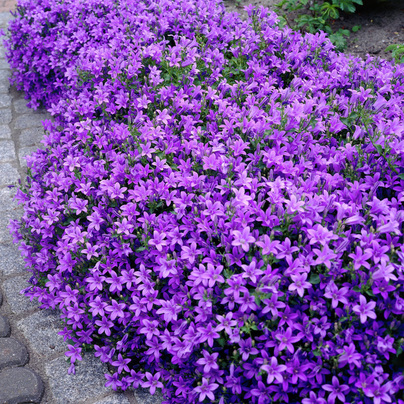
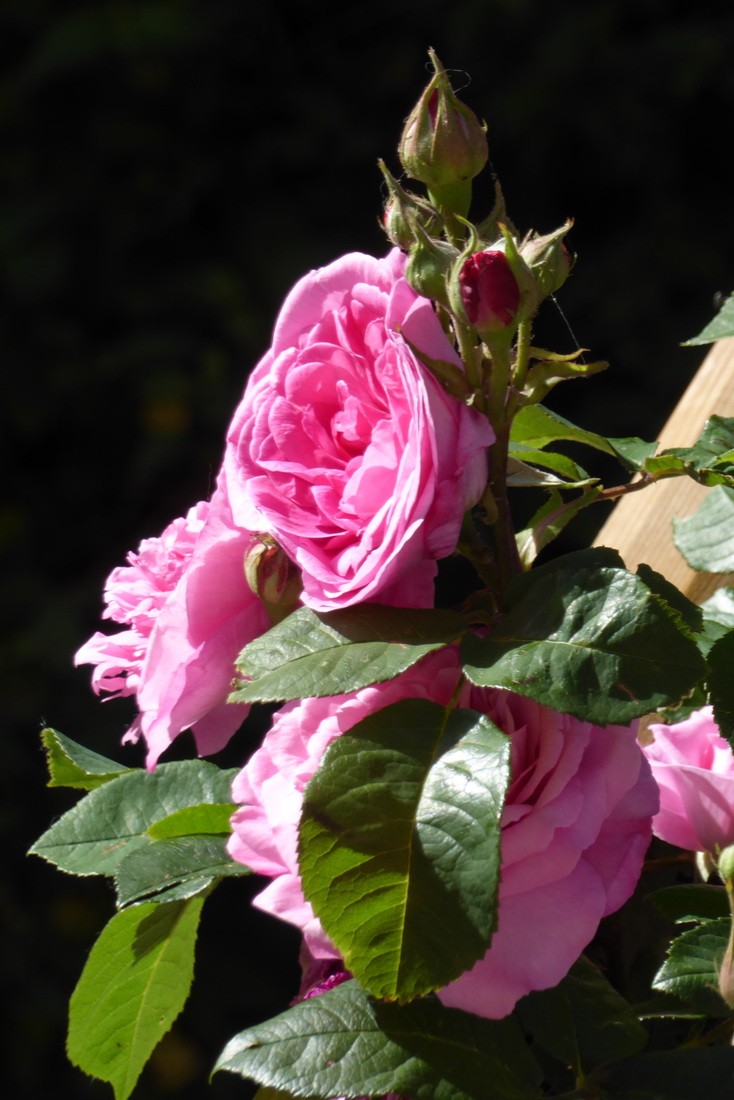
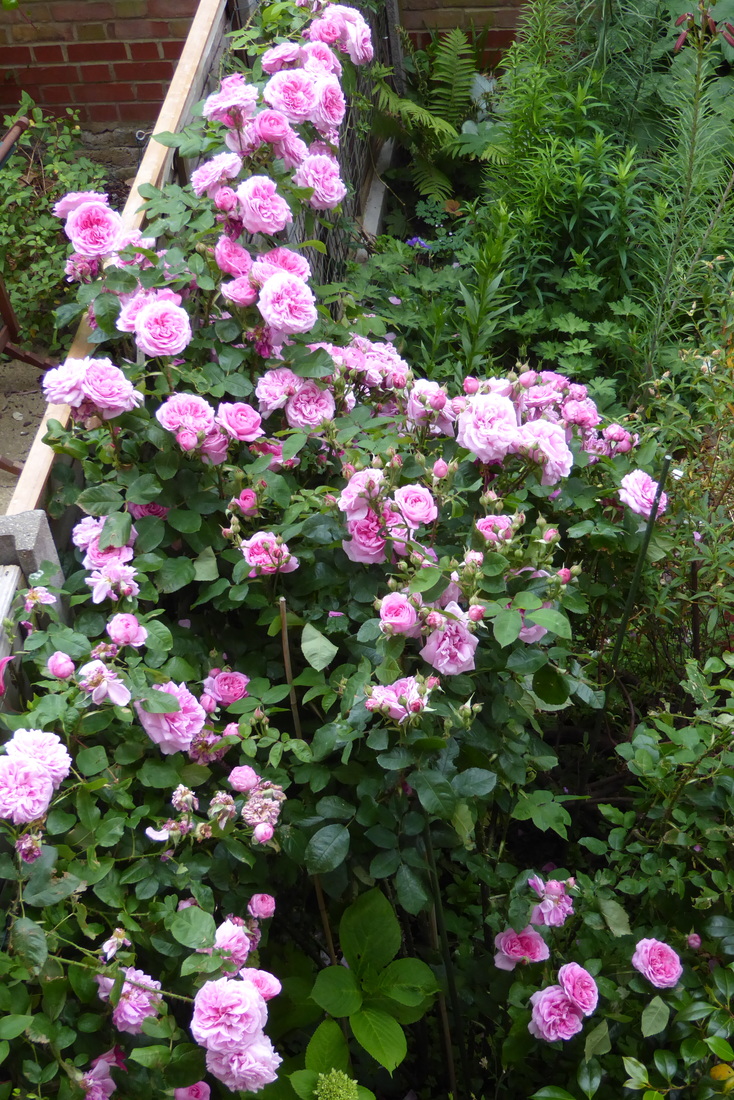
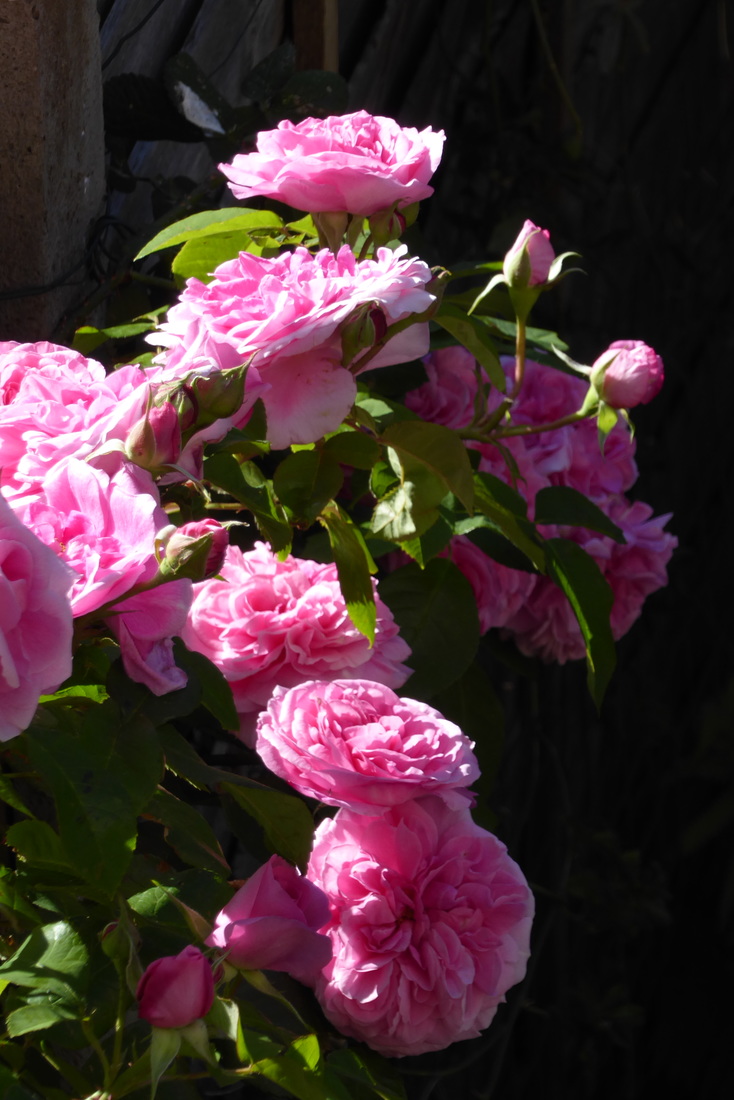
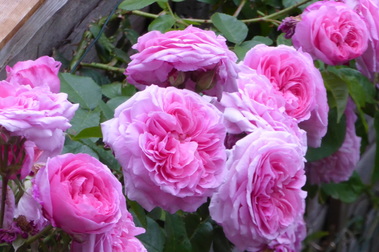
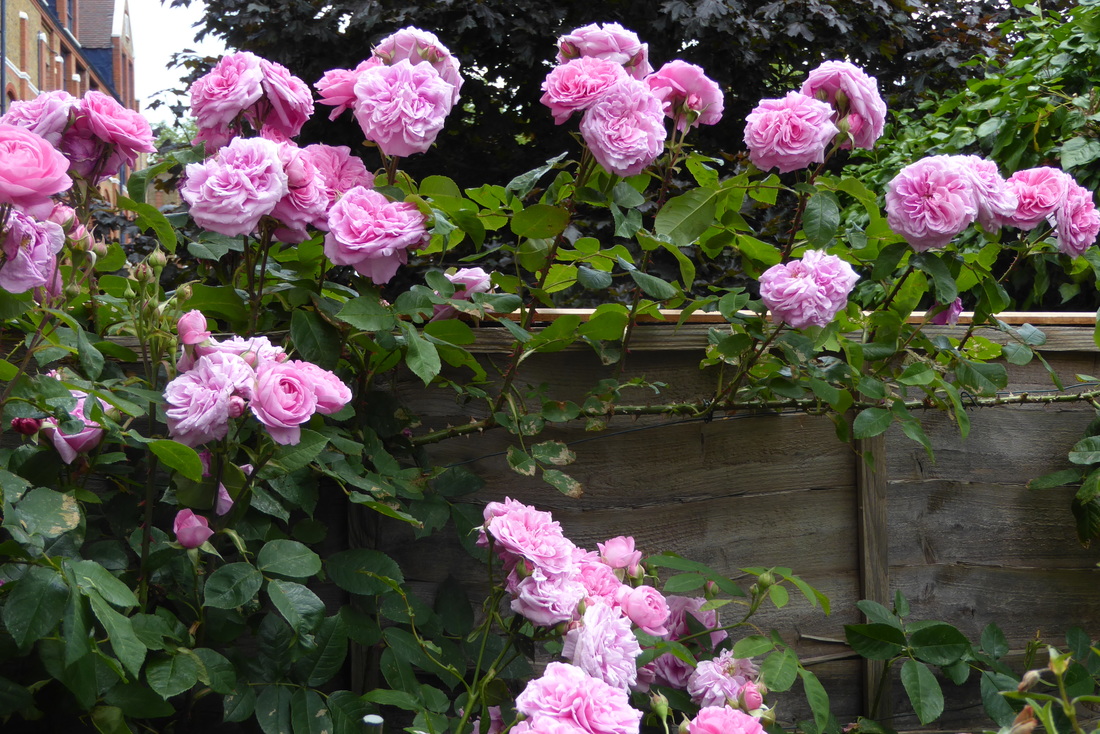
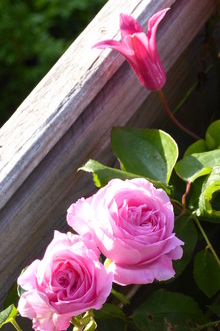
 RSS Feed
RSS Feed